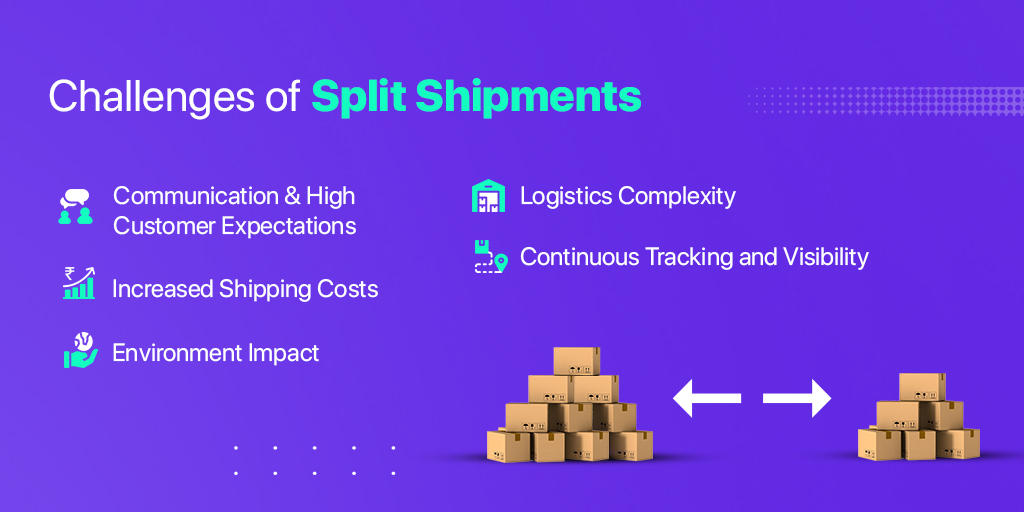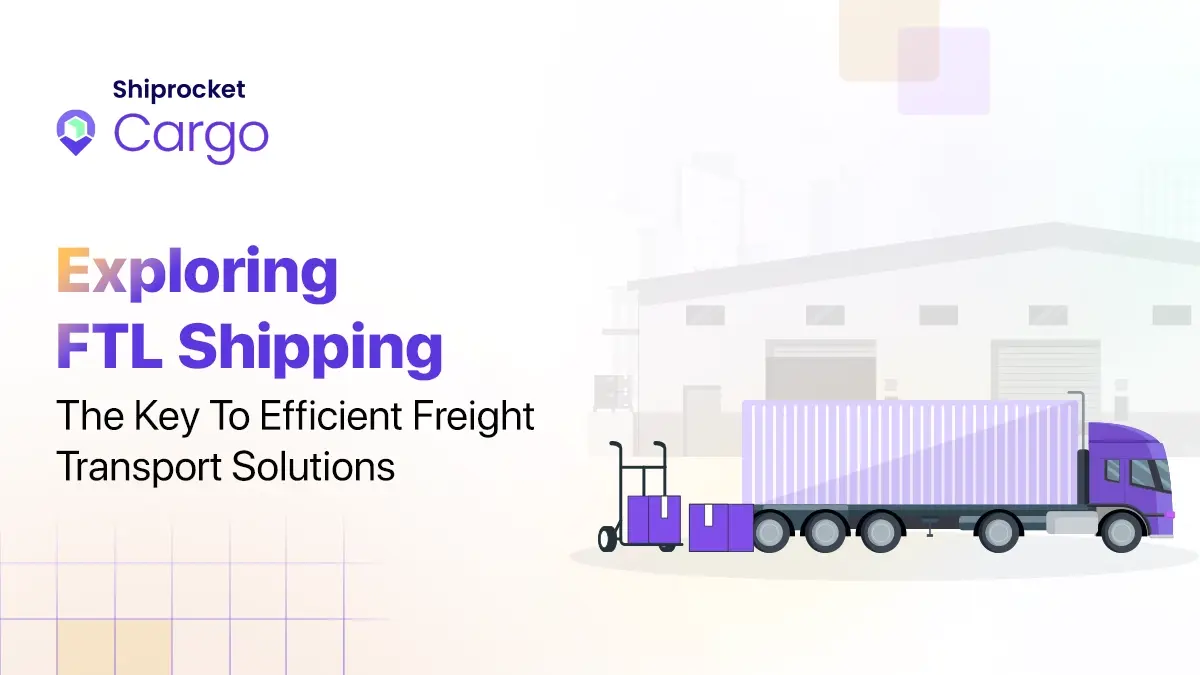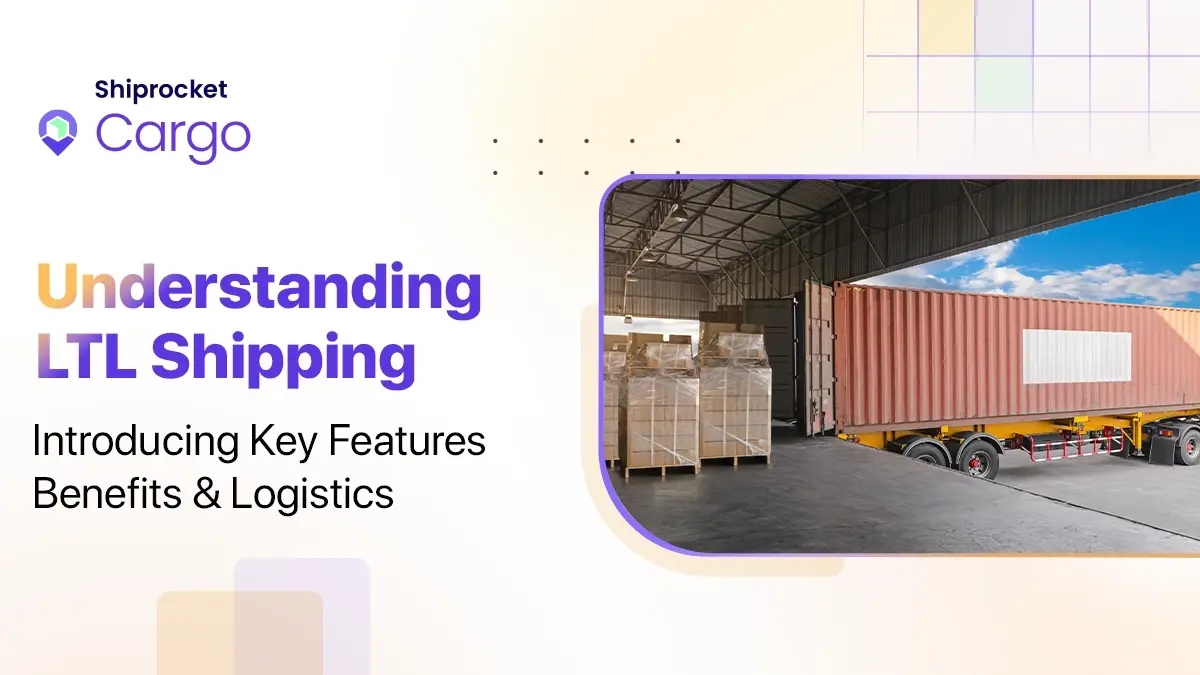A Comprehensive Guide to Split Shipments
In the world of logistics and supply chains, businesses encounter situations where they need to split shipments to multiple locations. That’s precisely what split shipments are. Split shipments are often employed in various industries and scenarios to optimise logistics and meet specific requirements. They can be utilised in domestic and international shipping, providing several benefits for businesses and customers. This guide will give you a brief overview of split shipments, including their definition, benefits, and tips to manage them effectively.
What is Split Shipment?
Split Shipments, also known as partial shipments, happen when a large shipment is divided into a single shipment for various reasons, such as optimising logistics, delivery timelines or managing inventory efficiently. Businesses can optimise delivery efficiency, overall delivery time, and enhanced customer experience by considering the split shipment strategy.
Benefits of Split Shipments
The key benefits of split shipments are as follows:
Improved Customer Satisfaction
Businesses can enhance customer satisfaction by providing partial shipments. Customers appreciate receiving at least a portion of their order quickly, even if some items are unavailable immediately. It demonstrates that the company values their time and strives to fulfill its needs promptly.
Reduced Shipping Costs
In a few cases, split shipments can result in cost savings. By choosing a suitable shipping method, businesses can reduce overall shipping expenses. For example, suppose a large order consists of items likely to ship from different locations. In that case, sending each item separately from its respective location may be more cost-effective rather than consolidating and shipping them together.
Flexibility and adaptability
Split shipments allow businesses to cater to the customers’ requirements. For example, if a customer requires an urgent item, it can be shipped separately, while the rest of the order can follow the regular delivery timeline. This customisation enhances the customer experience by accommodating individual requirements.
Risk Mitigation
By splitting a larger shipment, businesses can reduce the risk of delayed or damaged items. If one package gets stuck for some XYZ reason, the remaining items can still be shipped and delivered on time. Following such an approach will result in customer satisfaction and minimise potential disruptions’ impact.
Faster Delivery
Splitting the larger shipment into smaller ones will allow for more immediate delivery. This enables businesses to expedite delivery by reducing overall transit time. Customers receive their orders faster, resulting in customer satisfaction and loyalty.
Essential Steps to Split a Shipment
Below are a few steps to split a shipment more effectively:
Evaluate the Shipment
Review the items to determine if any factors warrant a split shipment. Consider availability, size, weight, fragility, and specific customer requirements.
Decide on the Shipping Criteria
Determine the criteria for splitting the shipment. This could include geographic location, warehouse availability, delivery time, or specific customer requests. Set clear guidelines to ensure consistency in the splitting process.
Split the items
Carefully divide the items according to the predetermined splitting criteria. Take note of the contents of each split shipment to ensure accuracy.
Prepare the Packaging
This step is where the items are packed separately using the appropriate packaging material. One must ensure that each package gets securely sealed and labelled correctly to avoid any confusion during transit.
Coordinate and Monitor Delivery
Businesses need to coordinate the shipments with the chosen shipping carriers while keeping a close eye on the delivery status of each package. They must ensure the package gets delivered on the scheduled date and that customers are well-informed if any potential issues arise during transit.
Dedicated Customer Support
Once all the orders are delivered, it’s time to follow up with the customers to confirm whether they have received the order or not. Take prompt actions to address customer concerns, if any, to provide exceptional customer support.
By following these steps, businesses can successfully split shipments while considering various aspects of split shipments. Clear communication with the customer is one of the most important things throughout the split shipment process to ensure a positive customer experience.
Challenges of Split Shipments

Split shipments can have both negative and positive impacts on the environment. Common challenges associated with split shipments are:
Communication and High Customer Expectations
Maintaining smooth communication with customers is one of the biggest challenges of split shipments. It is necessary to provide customers with accurate tracking information and estimated delivery dates and address major order concerns, if any.
Increased Shipping Costs
Most of the time, splitting shipments may result in high shipping costs as multiple packages are involved. Businesses need to analyse the various factors associated with shipping based on size, weight and geographic location. This can affect your shipping cost, especially when sending multiple split shipments to different places.
Environment Impact
Split shipments can significantly cause increased carbon emissions due to additional transportation requirements. Shipping of multiple orders can result in inefficient utilisation of transport resources. Therefore, businesses must implement sustainable methods to reduce the environmental impact of split shipments.
Logistics Complexity
Splitting shipments often increases the complexity of the logistics process. Effective management of multiple packages can be a tedious task that requires coordination to ensure that each shipment is properly packed, labelled and delivered to its destination. This complex process can be prone to errors or delays if not considered.
Continuous Tracking and Visibility
Keeping a constant track of shipments can be challenging, especially when opting for multiple shipping carriers. Businesses must monitor all shipments thoroughly, as it is essential to meet customer expectations and take immediate actions to resolve delivery concerns that may take place.
With all the challenges discussed above, it’s essential to know that split shipping is only a suitable solution in some situations. The suitability of split shipments depends on various factors, such as shipping cost, logistics, location etc. Therefore, it’s important to consider all the factors based on customer preferences to determine whether a split shipment is a viable solution or not.
Conclusion
With everything discussed above, split shipments have emerged as a valuable strategy to optimise delivery efficiency and enhance customer satisfaction. By dividing orders into separate packages and shipping them from different locations, businesses can expedite delivery times, improve inventory management, and provide flexibility to customers.
However, businesses must adopt it carefully, considering cost implications, communication transparency, packaging waste, and customer preferences. Striking the right balance is key to leveraging split shipments as a powerful tool in the ever-evolving supply chain and logistics world.
Frequently Asked Questions (FAQs)
Split shipment is the process of dividing a single shipment into multiple orders for delivery to different locations.
No, sellers don’t charge an extra shipping fee for a split shipment.
You can track each shipment individually, as they have their unique tracking number.




